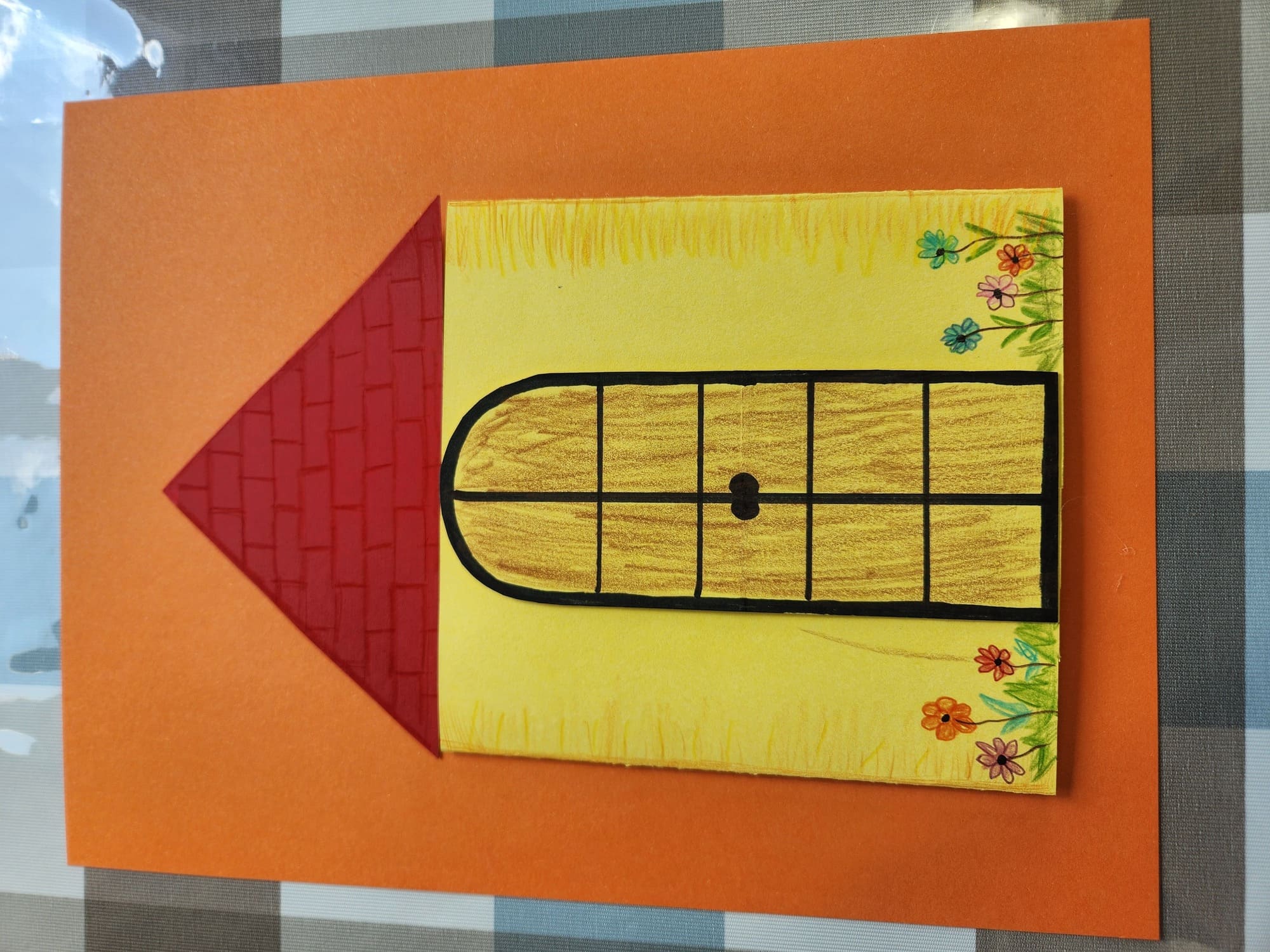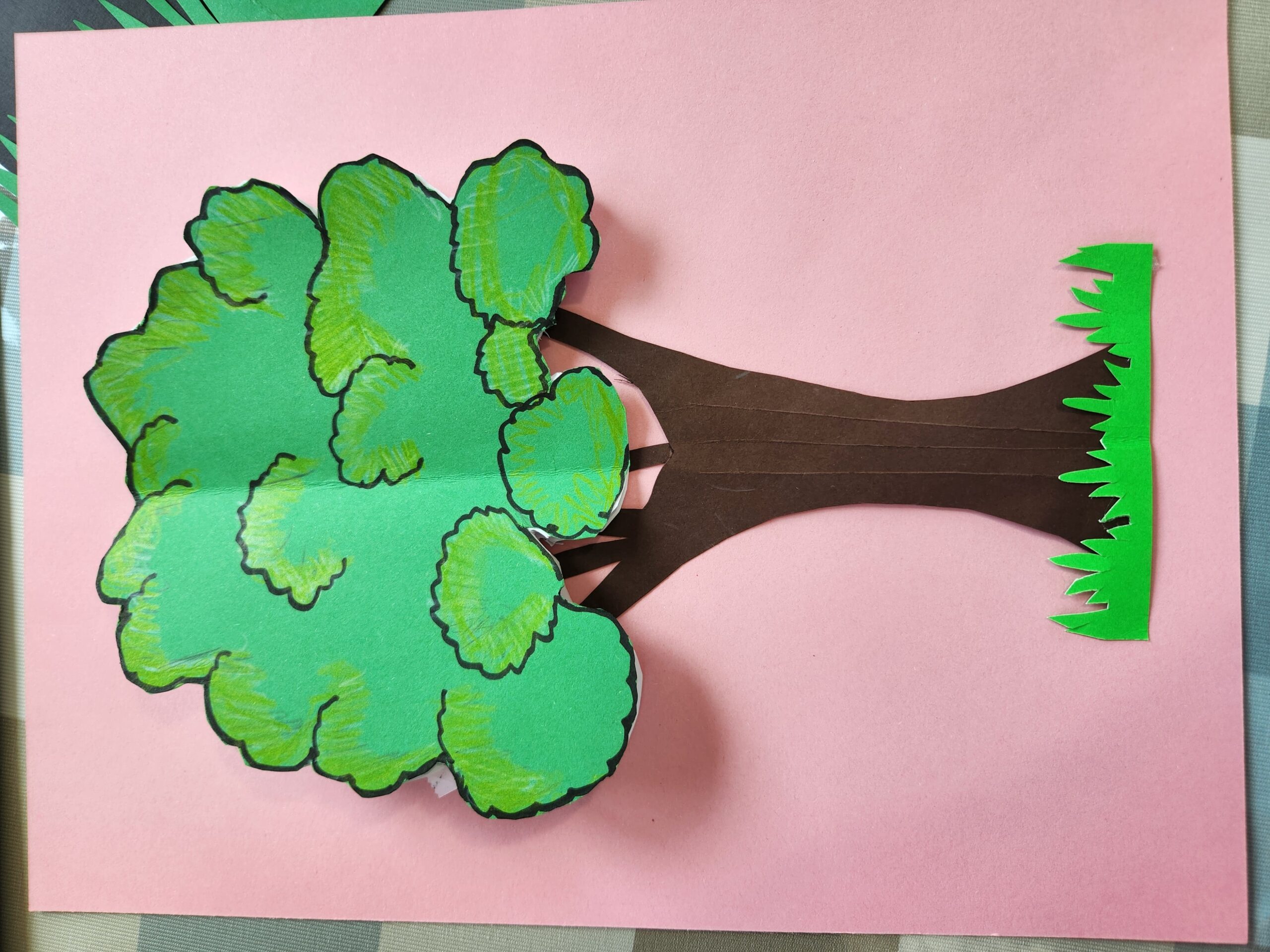Formative Assessment
My Assessment Journey:
A Nature-Inspired Exploration In this assignment ,I have drawn inspiration from nature to represent and reflect upon my learning and practices in assessment. I have created sheets featuring various nature-inspired designs for this assignment. We can use them in a scrapbook, as wall hangings, or as classroom decorations. As a gardener nurtures plants to help them thrive, thoughtful assessment practices make a classroom flourish.
To symbolize my existing knowledge, I have chosen a hut. Which represents the foundation of understanding I have built over time, providing shelter and support for my educational journey.
Hut is surrounding by flowers—each petal of flower representing the new insights and learnings I have gained from this class.
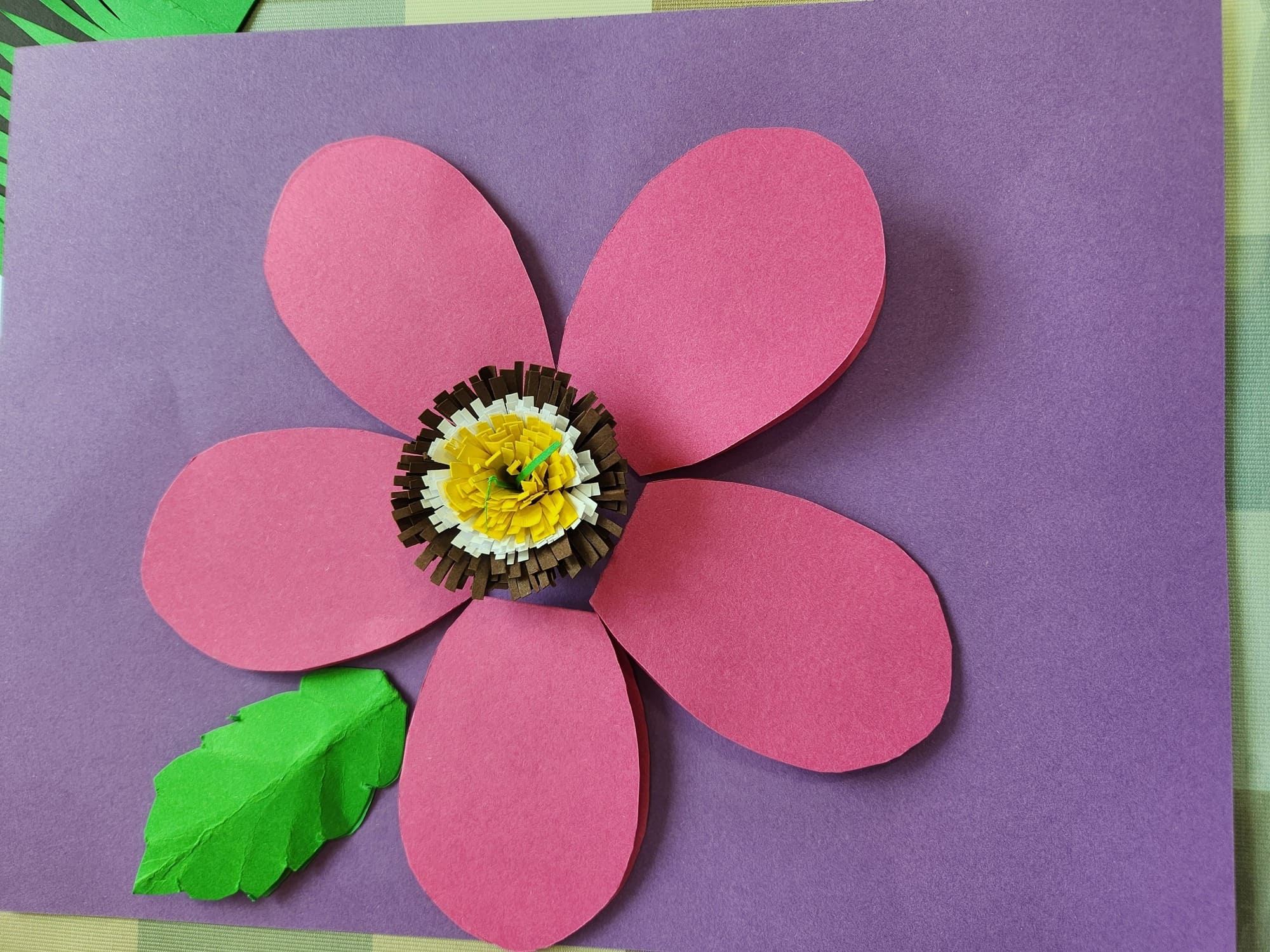 The classroom environment and learning practices are represented as tree, strong , providing structure and support.
The classroom environment and learning practices are represented as tree, strong , providing structure and support.
The birds that find shelter in its branches represent relation between learning ,instructional practices and assessment .they also represent instructional strategies , which are dynamic and adaptable, just as birds are to their environment.
 The clouds and butterfly symbolize assessment. Just as clouds bring rain to nourish the earth, assessments provide the necessary feedback to nurture student growth.
The clouds and butterfly symbolize assessment. Just as clouds bring rain to nourish the earth, assessments provide the necessary feedback to nurture student growth.
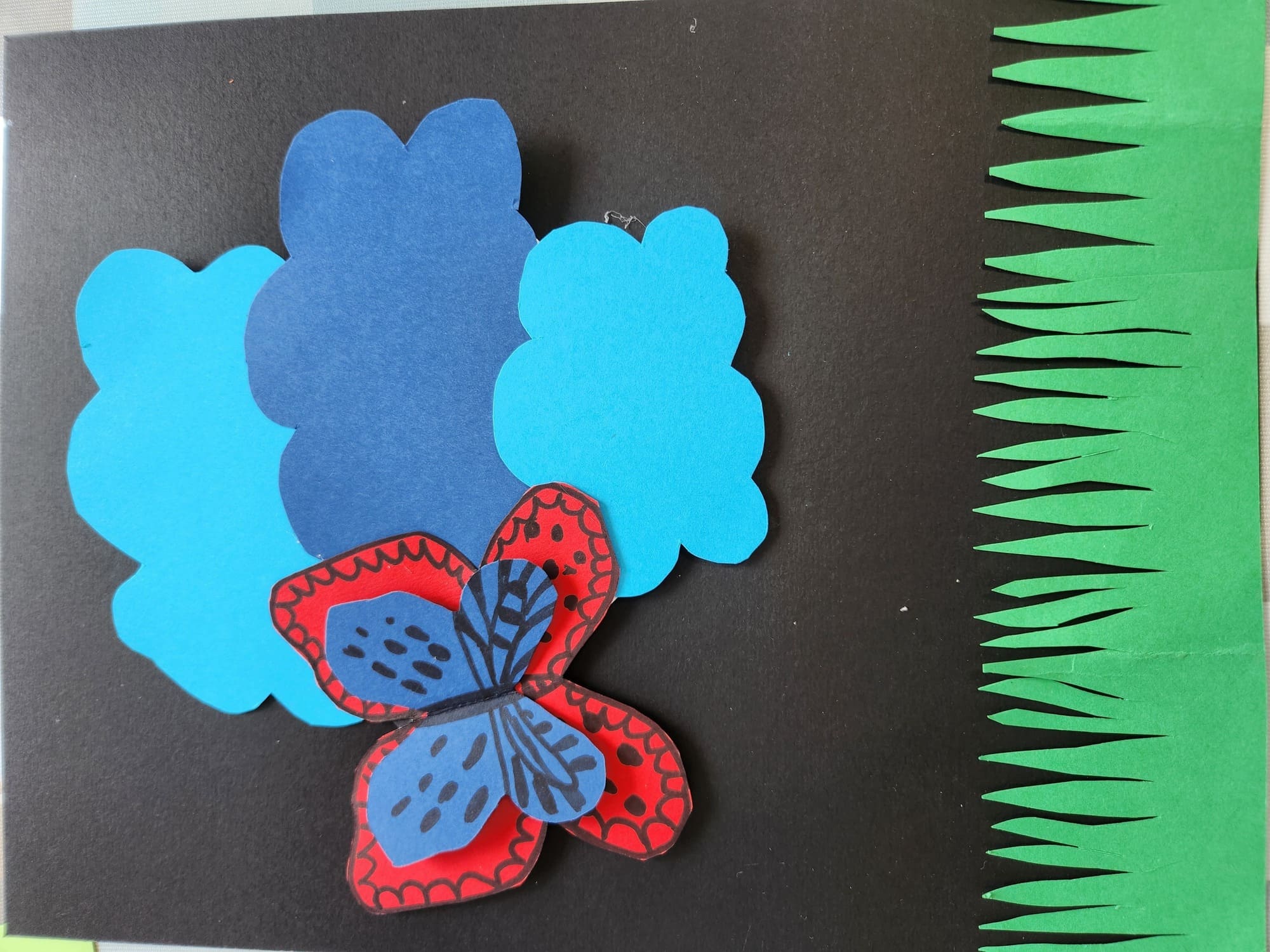 To illustrate the cyclical nature of the assessment process, I use the four seasons:
To illustrate the cyclical nature of the assessment process, I use the four seasons:
• Spring represents the planting of new ideas and initial assessments, setting clear learning goals, and starting with formative assessments.
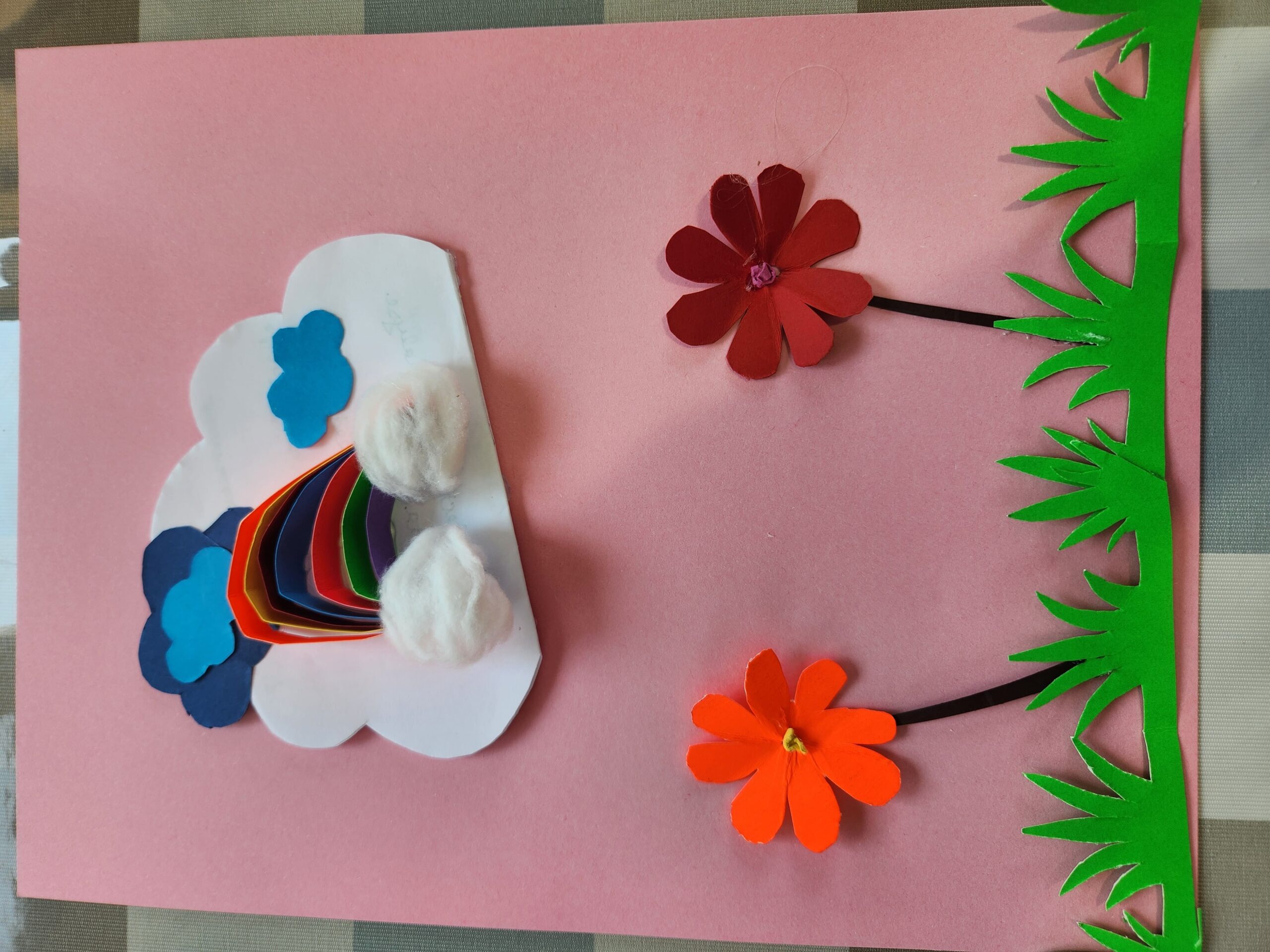 • Summer embodies the development and ongoing assessments, including encouragement of self-assessment, reflection, and celebration of effort and persistence.
• Summer embodies the development and ongoing assessments, including encouragement of self-assessment, reflection, and celebration of effort and persistence.
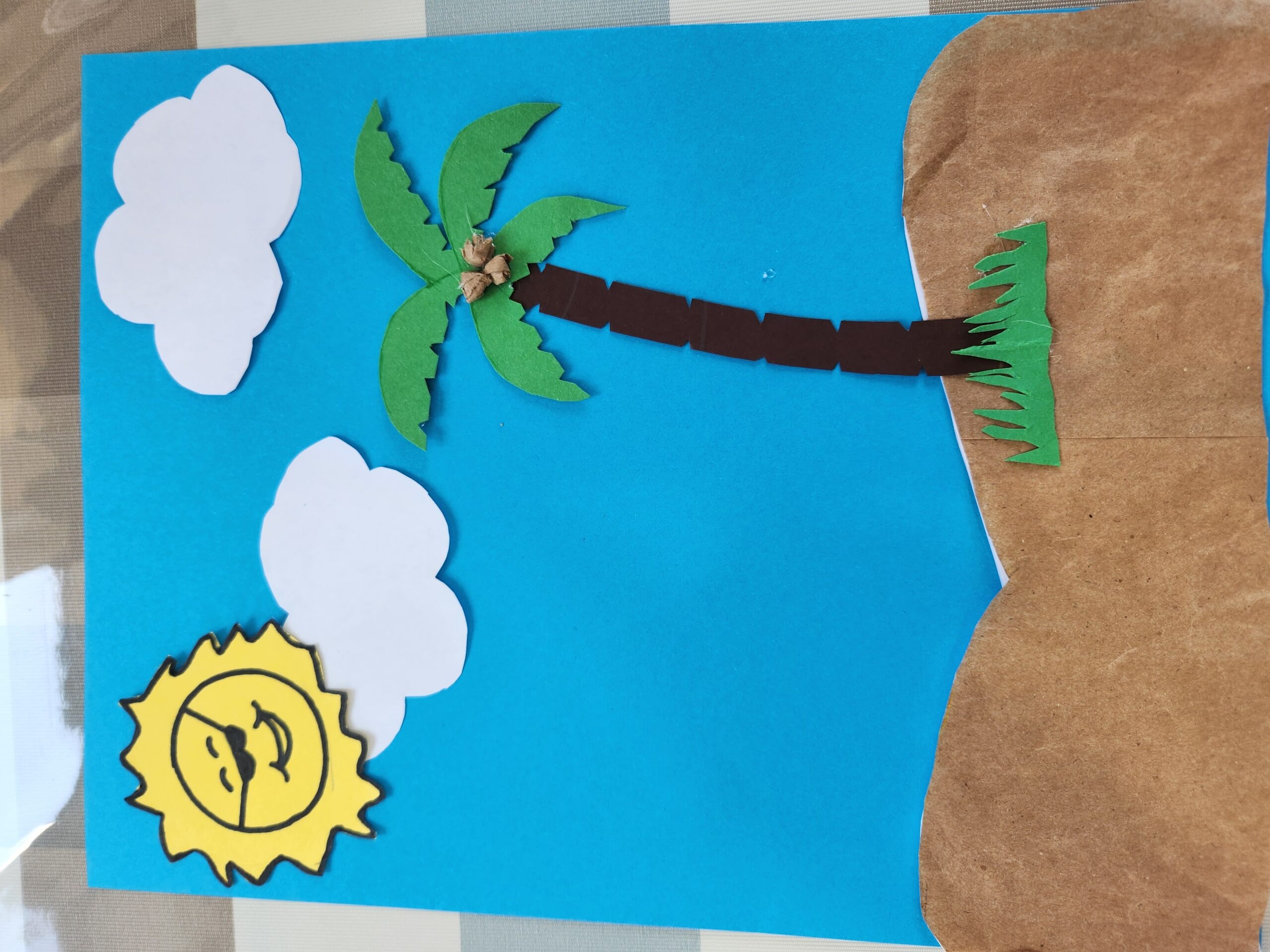 • Fall is the time for reflection and summative assessment, collecting and analyzing data, and adjusting instruction based on feedback.
• Fall is the time for reflection and summative assessment, collecting and analyzing data, and adjusting instruction based on feedback.
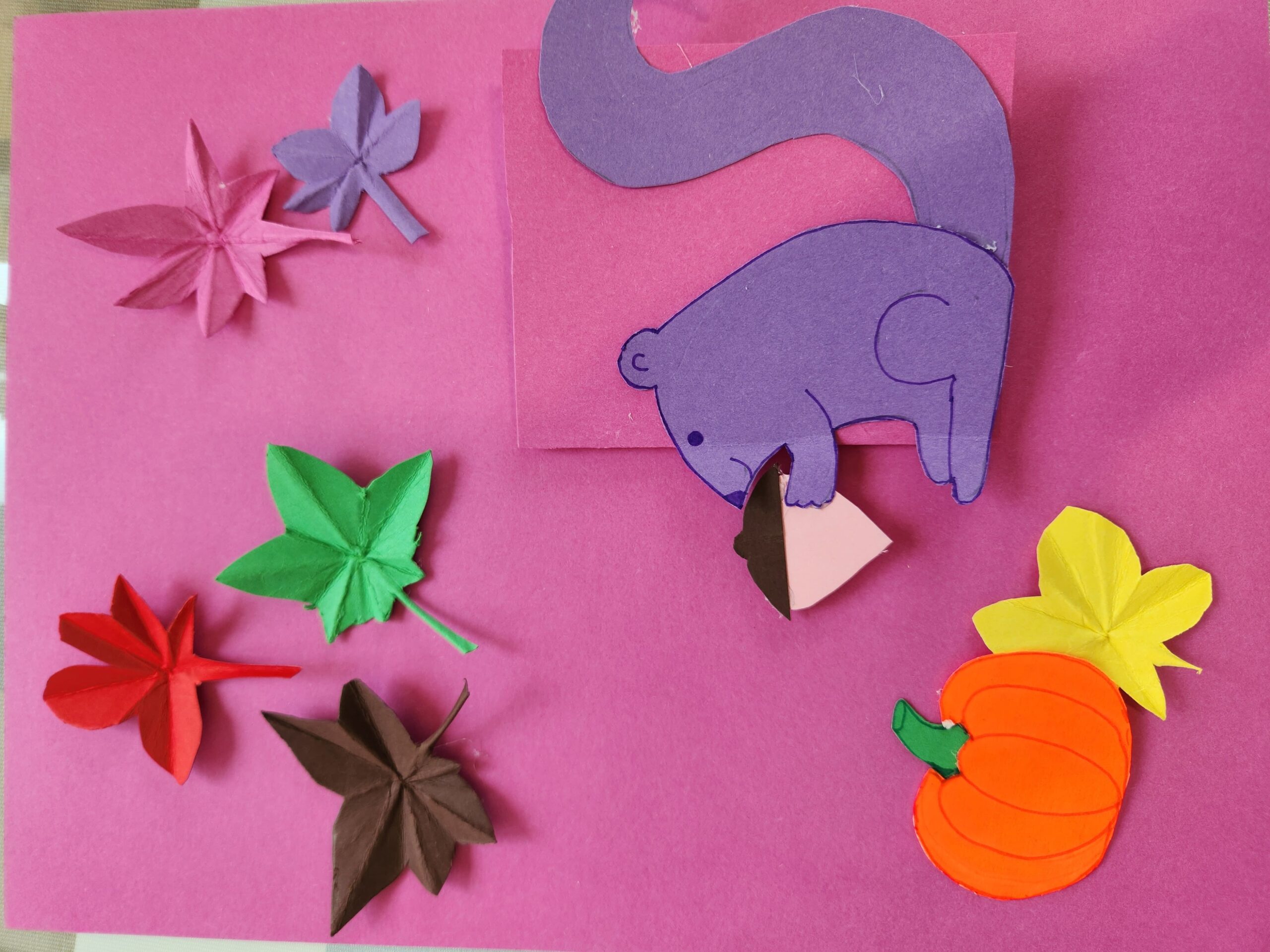 • Winter signifies analysis and planning for the future, providing constructive feedback, fostering a growth mindset culture, and offering varied learning opportunities.
• Winter signifies analysis and planning for the future, providing constructive feedback, fostering a growth mindset culture, and offering varied learning opportunities.
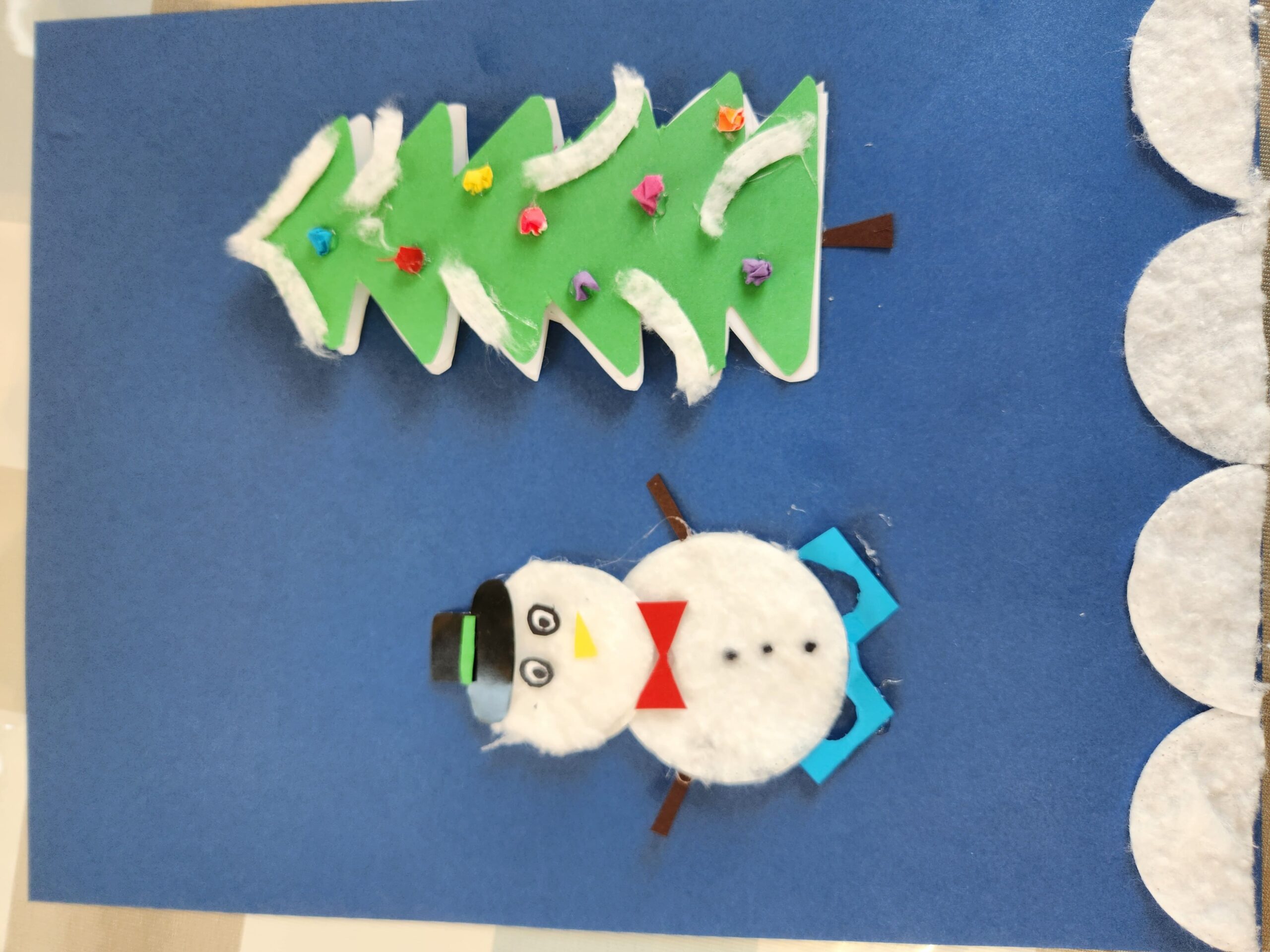 Through these natural elements, I have created a metaphorical landscape that mirrors my approach to assessment, illustrating the interconnectedness of the classroom environment, instructional practices, assessment processes, and student growth. Together, they form a harmonious ecosystem that supports and enhances learning.
Through these natural elements, I have created a metaphorical landscape that mirrors my approach to assessment, illustrating the interconnectedness of the classroom environment, instructional practices, assessment processes, and student growth. Together, they form a harmonious ecosystem that supports and enhances learning.
Take aways about what you have learned
I already know
1. Instruction :Instructions in assessment must be responsive to students’ needs.
I will design the lesson plans based on students’ interest and connect them to real world examples. I will also provide additional support or different ways according to students needs. I will Implement differentiated instruction strategies and check in with students regularly to adjust teaching methods as needed.
.
2. Grading: Grading must blend consistency with professional judgment.
Grades reflect students’ understanding based on set criteria and also show how students progressed and worked hard. I will assist the students to follow grading criteria for assessment and consider individual progress and effort in students’ evaluations.
3. Communication ;Communication about learning must be truthful and transparent.
I will Choose simple and clear language according to the grade ,helps the students to understand lessons and instructions in effective manner.
4. Feedback Assist the students to work on area of improvement. Teacher should Provide clear and direct feedback on assignments and assessments encourage open dialogue about academic progress.
I will give students honest feedback about their work so they can know exactly where they stand and how can improve.
5. Formative(for), as and Summative Assessment (of)Formative assessments will assist me to see how students will perform and make adjustment according . Summative assessments will show what they will have learned overall at the end of a unit.
I will include these assessments in my classroom which will assist students to express their understanding and knowledge .
6.Growth Mindset: Intelligence and abilities can be developed through effort and learning from mistakes. I believe that Students have abilities to grow with hard work and persistence. It’s okay to make mistakes because they help everyone to learn and improve.
I will Teach students about the fixed vs. growth mindset and provide opportunities to practice resilience and self-reflection in their learning.
Concepts I learned from the class
Feedback Types Different types of feedback provide different insights.
Descriptive feedback shows ways to improve, while evaluative feedback explain what students achieve and what needs more work.
I will Provide both types of feedback on assignments to help students to understand how they can improve and recognize their achievements.
Authentic Assessment : Authentic assessments are like real-life tasks where students can show what they know and can do, rather than just answering questions.
I will Incorporate tasks that mimic real-world scenarios and explain how these assessments reflect practical skills and knowledge.
Different types of Rubrics(assessment tools): Rubrics break down the criteria for evaluation and help students to understand what’s expected in assignment and how it will be graded.
I will Share rubrics( Analytical ,holistic and rating ) , before assignments and explain each criterion so students know how to meet the expectations.
Writing Feedback Effective feedback should be personalized, clear, and supported by evidence. I’ll give you feedback that’s specific to work and backed by examples. I will use.
• Unique Language: Tailor feedback to the individual student rather than using generic terms.
• Descriptive Standards: Use specific descriptors like exceeding, meeting, progressing and beginning
• Proofread: Ensure all feedback is accurate and supported by evidence.
• Avoid Pitfalls: Steer clear of using generic terms, slang, and unsupported statements. Focus feedback on specific areas for improvement, addressing one issue at a time.
This helps you understand exactly what to improve. As I have learned in this class, I will include positive statement(skill),critique, area of improvement and positive comment.
I will Use simple and clear language in feedback, avoid general or unsupported comments, and focus on one area for improvement at a time.
Triangulation method: In class, I will use triangulation by observing students during conservation activities, engaging them in discussions, and assigning related projects. This approach allows me to cross-check their understanding and skills across different contexts, ensuring a well-rounded assessment of their learning.
Connecting Instruction, Learning and Assessment
Instructions: strategies which work for teaching lessons
The relationship between assessment, classroom environment, and instructional practices is highly interconnected:
1. Assessment and Classroom Environment: Growth-focused assessments create a supportive atmosphere where students feel safe to take risks, enhancing trust and engagement. Transparent assessment practices develop a positive environment by making students feel that assessments are tools for learning rather than just evaluation.
2. Classroom Environment and Instructional Practices: A positive environment supports responsive and flexible teaching, encouraging collaboration and interaction. To make students feel comfortable, teachers should use differentiate instruction and adapt lessons to student needs, fostering deeper learning.
3. Instructional Practices and Assessment: Effective instructional practices align with assessment goals, using formative assessments to guide real-time adjustments in teaching. Which will create a feedback loop where assessment results inform future instruction, ensuring that teaching methods support student learning.
Assessment informs instruction, which shapes the classroom environment, creating a cycle that supports student growth and achievement.
Instructional Strategies:
• Visual Aids: I will Incorporate charts, pictures, diagrams, and multimedia to reinforce concepts and give instructions.
• Technology Integration: I will Use digital tools and resources to enhance students’ understanding and provide additional details.
• Collaborative Learning: I will also encourage peer interactions to foster deeper understanding.
• Simple language: I will use simple and clear language according to the grade level of students to enhance their understanding.
• Scaffolding: I will provide support structures like step-by-step instructions or guided practice, which will help to build student understanding gradually.
• Clear Objectives: I will Set specific and clear learning goals and outcomes for each lesson.
Strategies That Will Work Best in my classroom teaching are.
• Differentiation: Tailoring lessons to accommodate different learning styles and needs of the students .
• Active Engagement: I will use interactive methods like group assignments, hands-on activities, class discussions and integrate technology to make learning dynamic and relevant.
Learning – ways to check students’ understanding
Formative assessment and needs for evidence of learning and how this information will inform next lessons.
Checking for Understanding:
• Formative Assessments: I will regularly use tools like quick quizzes, exit tickets, and observations to gauge student progress and understanding in real-time.
• Student Self-Assessment: I will encourage students to reflect on their learning and assess their own progress, fostering a sense of ownership and responsibility.
• Peer Feedback: I will also Incorporate peer review sessions to allow students to give and receive constructive feedback from each other, which can deepen their understanding.
Evidence of Learning:
• Student Work Samples: I will collect and analyze examples and data of students’ work to assess their understanding.
• Participation and Engagement: Observing students’ involvement in discussions and activities works as indicators of their grasp of the material.
Triangulation in Learning:
• Conservation (Observation): I will Observe students during lessons to gather evidence of their engagement, problem-solving strategies, and interactions with peers.
• Observation: I will Collect data from direct observation of students working individually, in pairs, or in groups to identify learning patterns and needs.
• Product: Evaluate tangible student outputs, such as assignments, projects, or presentations, to assess their understanding and progress.
Informing Next Lessons:
• Adjusting Instruction: I will Use the evidence gathered through formative assessments and observations to modify future lessons, ensuring they address areas of confusion or challenge.
• Targeting Specific Needs: I will focus my future instructions on areas where students struggled, providing additional practice, additional time or alternative explanations to support learning. I will change the lesson plan and teaching strategies accordingly.
Assessment ways to assess students.
Assessing Students: Strategies and Considerations
1. Ways to Assess Students
I will use a variety of Assessment Methods like :
• Formative Assessments: I will include ongoing assessments such as quizzes, exit tickets, and observations to monitor student progress and adjust teaching as needed.
• Summative Assessments: I will also Implement test at end of unit , final projects, or comprehensive assignments to evaluate students’ overall understanding and mastery of the material.
• Performance-Based Assessments: I will assess students through practical tasks like presentations, projects, or experiments that require them to apply their knowledge in real-world scenarios and connect to daily life activities.
• Self and Peer Assessments: I will motivate students to assess their own and peers’ work, which foster reflection and critical thinking.
Triangulation of Evidence:
• Conservation (Observation): I will observe students’ interactions, engagement, and problem-solving during activities to gather qualitative evidence of learning.
• Observation: I will collect data of student behavior and participation during class activities to identify areas of strength and areas needing improvement.
• Product: After that, I will evaluate the quality and content of student work to assess their understanding and progress in learning.
2. Do Students Understand That You Are Assessing?
Transparency in Assessment:
• Clear Communication: I will clearly explain the purpose of each assessment, what I am looking for, and how it will be used to support their learning.
• Rubrics and Criteria: I will provide rubrics or clear criteria before assessments so that students know exactly what is expected and how they will be evaluated.
• Formative Feedback: I will inform the students that formative assessments are ongoing and are meant to help them improve rather than just to grade them.
3. Designing Meaningful Assessments
Relevance and Alignment:
• Real-World Applications: I will create assessments that relate to real-life situations or students’ interests, as it will make them more engaging and meaningful.
• Alignment with Objectives: I will always ensure that assessments are directly aligned with the learning objectives and goals of the lesson or unit.
Variety and Inclusivity:
• Diverse Assessment Types: I will incorporate different types of assessments (e.g., written, oral, visual, practical) to cater to various learning styles and abilities.
• Student Choice: In some assignments I will allow students to choose their own way of demonstration, whether through a written report, a creative project, a presentation or other methods.
4. Sharing with Students
Involvement in the Process:
• Pre-Assessment Briefing: I will discuss the assessment process with students beforehand, including the objectives, criteria, and expectations.
• Student Input: I will Involve students in creating or modifying rubrics or assessment criteria, giving them a sense of ownership and understanding of the process.
Post-Assessment Reflection:
• Reviewing Results Together: I will go over the assessment results with students, helping them to understand their strengths and areas for improvement.
• Encouraging Reflection: I will ask students to reflect on their performance and the feedback they received and to set goals for future learning.
5. Importance of Feedback
Timeliness:
• Immediate Feedback: I will provide feedback as soon as possible after the assessment, so students can use it to improve timely .
• Ongoing Dialogue: I will encourage an ongoing conversation about learning, where feedback is part of the regular exchange between teacher and student.
Constructive and Specific:
• Highlight Strengths: I will point out what students did well to reinforce positive behaviors and efforts.
• Offer Clear Next Steps: I will give specific suggestions on how students can improve, whether it’s reworking a particular problem or focusing on a certain skill.
• Balanced Approach: I will combine positive feedback with areas for improvement to maintain student motivation while guiding them toward growth.
What the process of assessment should look like in a classroom
How do you plan to weave in assessment ideologies into your classroom practices? • What will you do as a part of your daily plans? • What will you do when you are planning? • In what ways will students be actively a part of the process?
process of Assessment in the Classroom
1. Set Clear Learning Goals
o I will define what students will learn and be able to do.
o I will discuss these goals clearly to students, so they understand the expectations.
2. Plan for Various Types of Assessment
o Formative Assessment: I will Implement ongoing checks for understanding through observations, quizzes, class discussions, and informal assessments.
o Summative Assessment: I will design assessments that evaluate cumulative knowledge and skills at the end of a unit or term.
o Diagnostic Assessment: I will Use pre-assessments to gauge students’ prior knowledge and skills at the beginning of a unit or lesson.
o Dynamic Assessment: I will focus on the potential for learning and improvement through support and effective feedback.
3. Design Assessment Tasks
o I will create tasks that align with learning goals and develop critical thinking.
o I will ensure that the tasks are capable to address different learning styles and abilities.
4. Collect and Analyze Data
o I will collect data through student work, observations, and assessments.
o I will a analyze this data to identify trends, gaps, and areas of improvement.
5. Provide Feedback
o I will Offer timely, specific, and actionable feedback.
o I will highlight strengths and areas for growth, guiding students on area of improvement .
6. Adjust Instruction
o I will use assessment data to adjust teaching practices according .
o I will modify lesson plans, differentiate instruction, and provide additional support according to students’ requirements.
Weaving Assessment Ideologies into Classroom Practices
Daily Plans
o Incorporate Checkpoints: I will Start lessons with quick reviews of prior knowledge or set learning goals. Use exit tickets, entry tickets, questions or mini quizzes to gauge understanding.
o Use Observations: I will observe and note student engagement and understanding during activities and adjust instruction based on these observations.
o Encourage Self-Assessment: students will be encourage to reflect on their learning and progress which will help them to become more self-aware and responsible for their learning.
2. Planning
o Align Assessments with Learning Objectives: I Will make sure that both formative and summative assessments are aligned with the learning goals.
o Design Rubrics: I will develop clear criteria for evaluating student work and share the rubrics with students beforehand so they understand how they will be assessed.
o Plan for Differentiation: I will design assessments that cater to varying levels of ability and provide options for students to demonstrate their learning.
3. Student Involvement
o Peer Assessment: I will Incorporate peer review activities where students give and receive feedback from classmates.
o Self-Assessment: I will teach students to evaluate their own work against set criteria. This promotes self-regulation and ownership of learning.
o Reflective Practices: I will motivate the students to reflect on their learning process and outcomes by using journals or discussion prompts to facilitate this reflection.
Examples of my Daily Plan Incorporating Assessment
1. Begin Lesson
o I will quickly review, or warm-up activity related to previous content and set learning objectives for the day accordingly.
2. During Lesson
o I will use formative assessment techniques (e.g., questioning, exit tickets) to gauge understanding as well as observe student interactions and adjust instruction based on observations.
3. End of Lesson
o I will conduct a brief formative assessment (e.g., exit ticket, summary of key points) and provide immediate feedback on the day’s learning.
4. Follow-Up
o I will review assessment data to plan the next day’s instruction and offer feedback to students on their progress and set goals for improvement.
Practices that support student growth and success
Target the idea of what is a ‘practice’ that impacts a mindset for growth • How will you help students know that it is okay to make mistakes? • How will you model to students what a growth mindset means? • What will you do that will help students be successful in your classroom?
Supporting student growth and success involves creating a classroom environment that nurtures a growth mindset and encourages resilience. I will some practices that can help achieve these goals:
1. Embrace Mistakes as Learning Opportunities:
o Create a Safe Environment: Reinforce that mistakes are a acceptable and valuable part of the learning by using positive language to frame errors as opportunities for growth.
o Share Your Own Mistakes: I will share my own learning experiences and mistakes with students and discuss what I have learned from these mistakes and how I improved which makes it clear that everyone, including teachers, makes mistakes.
2. Modeling a Growth Mindset:
o Use Growth-Oriented Language: students use phrases like “I can’t do this yet” or “This is challenging, but I motivate them and ask them to say I’ll keep trying” and demonstrate a growth mindset.
o Celebrate Effort and Persistence: I will praise students for their effort, persistence, and strategies rather than just their innate abilities. I will recognize and reward their hard work and problem-solving skills.
3. Encourage Reflection and Self-Assessment:
o Regular Reflection: I will Integrate reflection activities where students can assess their own progress and identify areas for improvement. This can be possible through journals, self-assessment checklists, or class discussions.
o Set Personal Goals: I will assist students to set and monitor their own learning goals. This will encourage ownership of their learning and highlights progress over time.
4. Provide Constructive Feedback:
o Timely and Specific Feedback: I will Offer feedback that is specific, actionable, and focuses on how students can improve. Ensure that it is constructive and encourages students to think about how they can apply the feedback.
o Celebrate Small Wins: Highlight and celebrate incremental improvements and achievements to keep students motivated and engaged.
5. Foster a Growth Mindset Culture:
o Classroom Culture: I will Create a classroom culture that values effort, resilience, and continuous learning. Display posters or reminders about the growth mindset and discuss it regularly.
o Peer Support: Encourage students to support each other and work collaboratively. It will foster a sense of community and collective growth.
6. Provide Varied Learning Opportunities:
o Differentiation: I will provide differentiated instruction to meet diverse learning needs and styles. Offer varied types of activities and assessments to cater to different strengths and interests.
o Hands-On Activities: I will Incorporate activities that allow for experimentation and exploration, helping students learn through doing and discovering.



